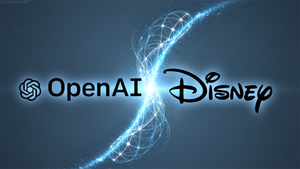Goal is to report UP421 proof of concept data in 2023 and 2024
Potential to remove immunosuppression from islet cell transplantation
SEATTLE, Nov. 17, 2023 (GLOBE NEWSWIRE) -- Sana Biotechnology, Inc. (NASDAQ: SANA), a company focused on changing the possible for patients through engineered cells, and Uppsala University Hospital in Sweden today announced the Swedish Medical Products Agency has authorized Uppsala University’s Clinical Trial Application (CTA) to initiate an investigator-sponsored, first-in-human study of UP421, an allogeneic, primary islet cell therapy engineered with Sana’s hypoimmune (HIP) technology, in patients with type 1 diabetes.
The goal of UP421 treatment is to provide proof of concept for transplanting functional islet cells without immunosuppression. UP421 is engineered using Sana’s hypoimmune platform modifications with the goal of evading both allogeneic and autoimmune rejection. The study is designed with endpoints of safety, cell survival, immune evasion, and C-peptide production. Insights from this study may inform development of Sana’s SC451, a hypoimmune-modified stem-cell derived islet cell therapy for patients with type 1 diabetes.
“Islet cell transplantation has shown curative potential for patients with type 1 diabetes, but the need for concurrent immunosuppression has led to side effects, limited efficacy, and decreased utilization. Sana’s hypoimmune platform has shown the potential to evade both allogeneic and autoimmune rejection in preclinical models, and we look forward to seeing if these insights translate into patients, providing a path to cell transplantation without immunosuppression,” said Steve Harr, Sana’s President and CEO. “The team at Uppsala has significant experience in primary islet cell manufacturing, transplantation, and clinical care of these patients, and we look forward to seeing the results from this clinical study and applying learnings to SC451.”
“We are pleased with the authorization of the CTA and look forward to treating a patient with cells engineered with this novel technology,” said Per-Ola Carlsson, Study Principal Investigator, Senior Physician and Professor of Diabetes at Uppsala University Hospital. “We have performed approximately 165 allogeneic, primary islet cell transplants and have seen the benefits for patients, but the complications of immunosuppression inhibit broader use of this procedure. Combining Sana’s hypoimmune technology with primary islet cell transplantation therapy can generate important first-in-human data that may be a step to removing immunosuppression from allogeneic cell transplant in the type 1 diabetes setting. The long-term hope is that all patients with type 1 diabetes can be cured of the disease by replacing their destroyed insulin-producing cells with new ones.”
Primary islet cell transplantation is an established procedure in type 1 diabetes, where allogeneic islet cells are isolated from a cadaver and transplanted into a patient with a goal of blood glucose control without the need for insulin. As with any organ transplant, suppression of the recipient’s immune system is required to prevent immune rejection of the transplanted cells. In addition to complications from this immune suppression, inadequate immunosuppression has limited uptake and durability of effect, as most patients eventually reject the transplanted islets over months to years, lose glucose control, and become insulin-dependent again, primarily due to immune rejection of the allogeneic islets from inadequate immunosuppression.
Sana’s hypoimmune technology seeks to overcome the immunologic rejection of allogeneic cells via disruption of human leukocyte antigen (HLA) class I and class II expression to allow cells to evade the adaptive immune system, including antibody and T cell responses, as well as overexpression of CD47 to allow cells to evade the innate immune cell system, in particular macrophages and natural killer (NK) cells. If UP421 successfully overcomes immunologic rejection, it may result in engraftment, survival, and C-peptide production in patients with type 1 diabetes following transplantation without immune suppression. Sana’s prior presentations across multiple preclinical models have highlighted the potential of this platform to enable allogeneic cells to evade immune recognition and the potential of hypoimmune-modified cells as a therapeutic for patients.
About Hypoimmune Platform
Sana’s hypoimmune platform is designed to create cells ex vivo that can evade the patient’s immune system to enable the transplant of allogeneic cells without the need for immunosuppression. We are applying the hypoimmune technology to both donor-derived allogeneic T cells, with the goal of making potent and persistent CAR T cells at scale, and pluripotent stem cells, which can then be differentiated into multiple cell types at scale. Preclinical data published in peer-reviewed journals demonstrate across a variety of cell types that these transplanted allogeneic cells are able to evade both the innate and adaptive arms of the immune system while retaining their activity. Our most advanced programs utilizing this platform include an allogeneic CAR T program targeting CD19+ cancers, an allogeneic CAR T program for B-cell mediated autoimmune diseases, an allogeneic CAR T program targeting CD22+ cancers, and stem-cell derived pancreatic islet cells for patients with type 1 diabetes.
About Sana Biotechnology
Sana Biotechnology, Inc. is focused on creating and delivering engineered cells as medicines for patients. We share a vision of repairing and controlling genes, replacing missing or damaged cells, and making our therapies broadly available to patients. We are a passionate group of people working together to create an enduring company that changes how the world treats disease. Sana has operations in Seattle, Cambridge, South San Francisco, and Rochester. For more information about Sana Biotechnology, please visit https://sana.com/.
Cautionary Note Regarding Forward-Looking Statements
This press release contains forward-looking statements about Sana Biotechnology, Inc. (the “Company,” “we,” “us,” or “our”) within the meaning of the federal securities laws, including those related to the Company’s vision, progress, and business plans; expectations for its development programs, product candidates and hypoimmune technology platform; expectations regarding the timing and significance of data from the investigator-sponsored clinical trial of UP421; the ability to use the Company’s hypoimmune platform to overcome the immunologic rejection of allogeneic cells and the potential benefits associated therewith; the potential impact of insights from the UP421 study on development of the Company’s SC451 development program; the potential therapeutic benefits of islet cell transplantation; and the potential ability to use the hypoimmune technology to make potent and persistent allogeneic CAR T cells at scale and pluripotent stem cells that can be differentiated into multiple cell types at scale. All statements other than statements of historical facts contained in this press release, including, among others, statements regarding the Company’s strategy, expectations, cash runway and future financial condition, future operations, and prospects, are forward-looking statements. In some cases, you can identify forward-looking statements by terminology such as “aim,” “anticipate,” “assume,” “believe,” “contemplate,” “continue,” “could,” “design,” “due,” “estimate,” “expect,” “goal,” “intend,” “may,” “objective,” “plan,” “positioned,” “potential,” “predict,” “seek,” “should,” “target,” “will,” “would” and other similar expressions that are predictions of or indicate future events and future trends, or the negative of these terms or other comparable terminology. The Company has based these forward-looking statements largely on its current expectations, estimates, forecasts and projections about future events and financial trends that it believes may affect its financial condition, results of operations, business strategy and financial needs. In light of the significant uncertainties in these forward-looking statements, you should not rely upon forward-looking statements as predictions of future events. These statements are subject to risks and uncertainties that could cause the actual results to vary materially, including, among others, the risks inherent in drug development such as those associated with the initiation, cost, timing, progress and results of the Company’s current and future research and development programs, preclinical and clinical trials, as well as the economic, market and social disruptions due to the ongoing COVID-19 public health crisis. For a detailed discussion of the risk factors that could affect the Company’s actual results, please refer to the risk factors identified in the Company’s SEC reports, including but not limited to its Quarterly Report on Form 10-Q dated November 8, 2023. Except as required by law, the Company undertakes no obligation to update publicly any forward-looking statements for any reason.
Sana Investor Relations & Media:
Nicole Keith
investor.relations@sana.com
media@sana.com
Uppsala University Hospital:
Per-Ola Carlsson
per-ola.carlsson@mcb.uu.se








